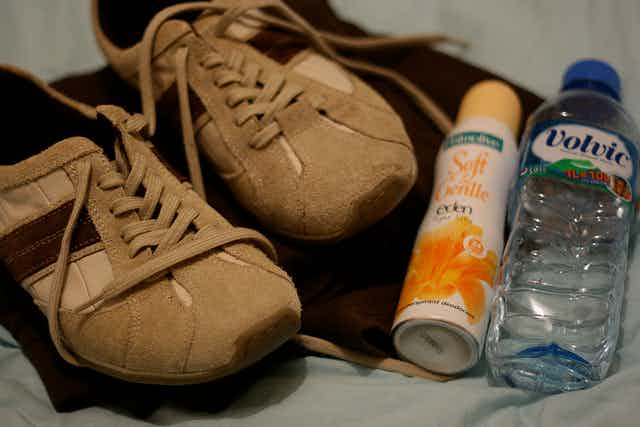The concern that using deodorants and antiperspirants might increase the risk of breast cancer has been around for around for at least 15 years, probably longer.
The theory suggests that either parabens, a preservative previously used in some deodorants that acts as a weak form of oestrogen, or aluminium salts used in many antiperspirants, enter the body and contribute to or cause breast cancer.
Studies detecting the presence of traces of paraben and aluminium products in breast tissue and breast tumour are put forward as evidence of the connection.
The other argument supporting this theory centred on the higher proportion of breast cancer lesions being located in the upper outer quadrant of the breast. This is where deodorants and antiperspirants would come into most contact with breast tissue.
Others have observed there is simply more breast tissue in that part of the breast. So if lesions are evenly spread, we would expect to find more disease in that part of the breast.
Another issue is measurement precision. As reported in the study that advanced the theory, between the years 1980 and 1996, there was a lack of compliance with recording cancer lesion location by breast quadrant. Only 17.5% of cases recorded cancer location by quadrant, making meaningful analysis difficult.
On the question of the presence of parabens in breast tissue or breast lesions, detectable measures in tissue does not in itself prove causation of disease. Breast cancers, like most solid tumours, develop their own access to the body’s blood as a means to grow. As a result, it’s likely that any substance that’s in the blood stream will be detectable in small amounts in the tumour tissue. But it doesn’t mean the detected substance caused the cancer.
Nonetheless, as a result of the stories circulating about the potential harms of parabens, most manufacturers of deodorants have ceased using these preservatives. Not because of a proven harm, but because of a suspicion (“market perception”) of possible harm, which ultimately affects sales.
What does the evidence say?
Studies aimed at determining if a connection between underarm products and breast cancer really exists have not been able to find a causal link. One study in 2002 looked at about 800 women with breast cancer and a similar number of matched controls. They asked about the use of antiperspirants and deodorants, and underarm shaving habits. They could not find any difference between those with and those without breast cancer for any of these behaviours.

Another small case control study, in 2006 found that 82% of the controls (women without breast cancer) and 52% of cases (women with breast cancer) used antiperspirants, indicating that using the under arm product might protect against breast cancer. While the study is too small to justifiably make such a claim, it certainly does not support the “antiperspirants cause cancer” story.
Reputable groups like the American National Cancer Institute, Cancer Research UK, the American Cancer Society and most other major authorities suggest the link between deodorant or antiperspirant use and breast cancer is unconfirmed, or simply a myth.
What about radiotherapy?
Another contributing factor that perpetuates this myth is that patients undergoing radiotherapy are commonly advised to stop using antiperspirants during therapy, on the theory that the aluminium salts may influence the therapy. However a 2009 Australian study indicated that less than half of patients complied with this advice, with many forgetting (43%) or ignoring (10%) it.
Interestingly, this study also found, “Of the 233 women who routinely wore a deodorant but abstained during radiotherapy, 19% expressed a lot of concern about body odour and 45% were slightly concerned”. This suggests that many people see a clear benefit in using these products.
Even more recently, a Canadian study found no evidence of antiperspirant use having any adverse effect on radiotherapy treatment for breast cancer.
It’s impossible to ignore that the majority of research on the possible link between underarm cosmetics and breast cancer comes from one research group. And it seems despite the absence of evidence to support the link, their search to prove the theory is unlikely to stop.
Who knows, they may ultimately be proven correct. But based on the evidence from most of the other groups researching this question – it seems likely to remain nothing more than a myth.
For more cancer myths, visit Cancer Council’s iheard website.
Further reading:

